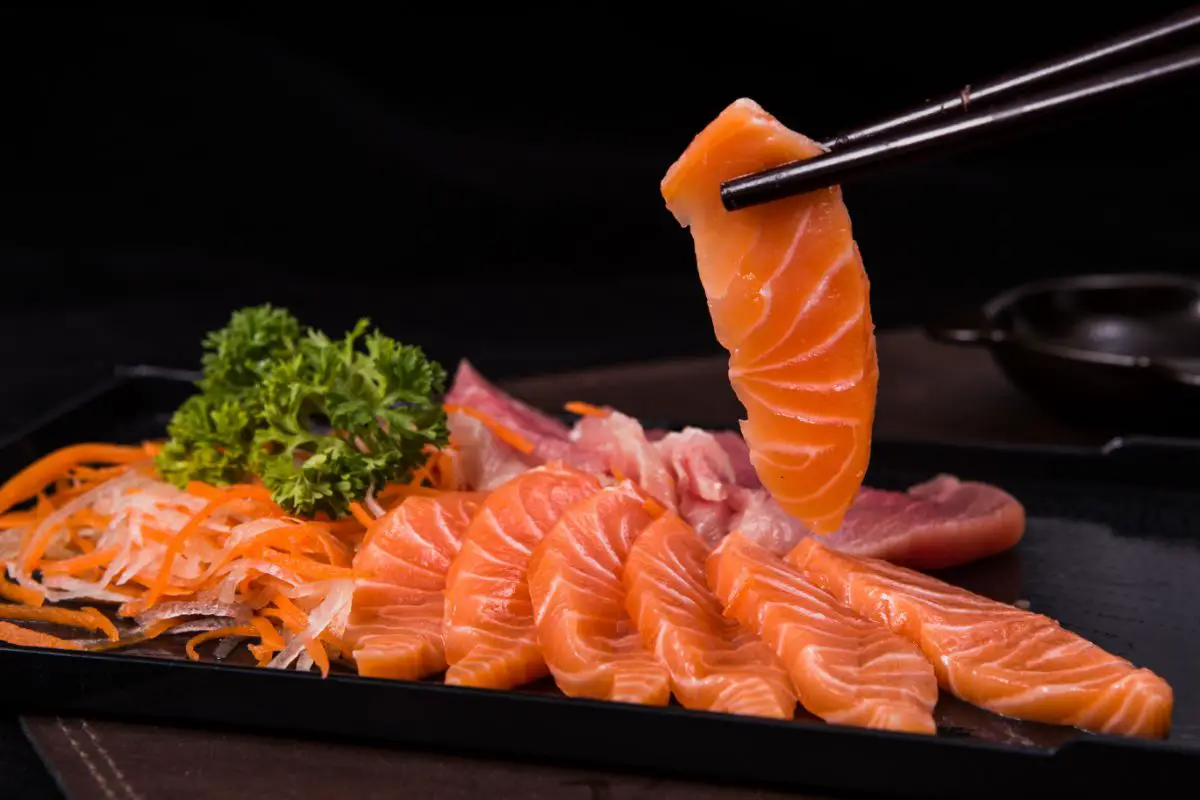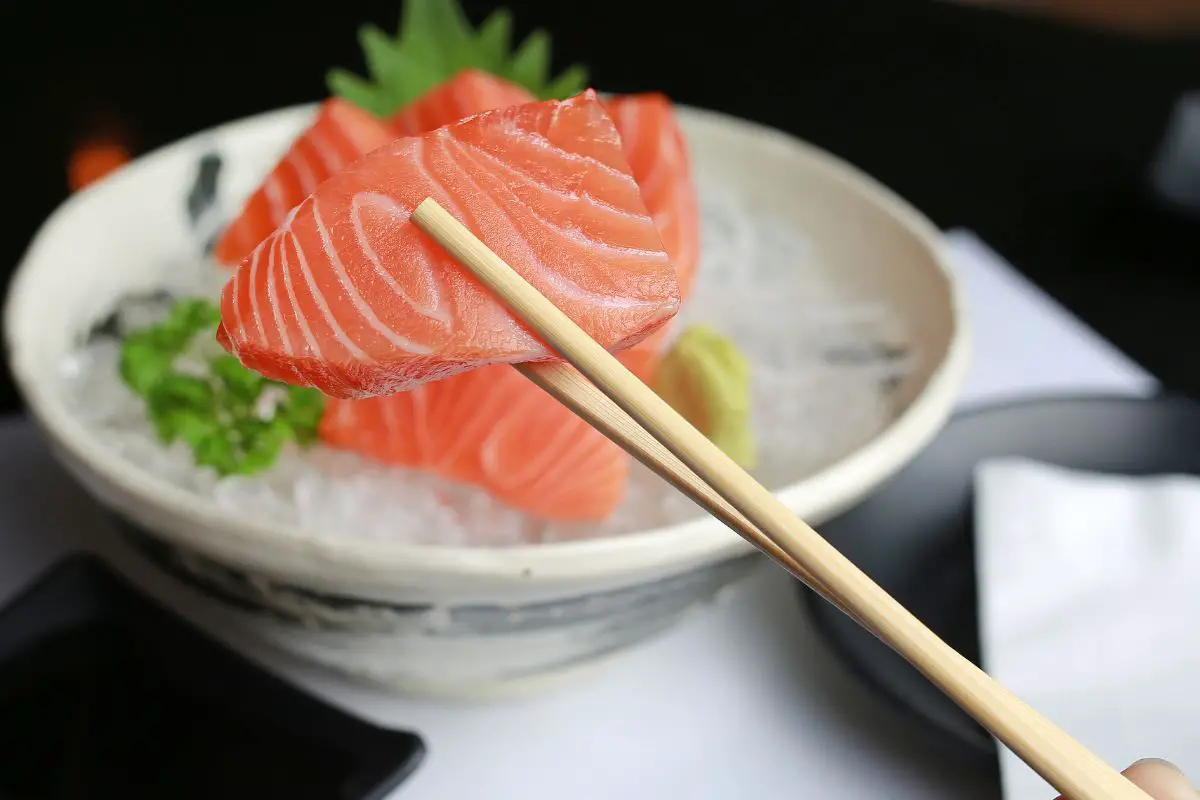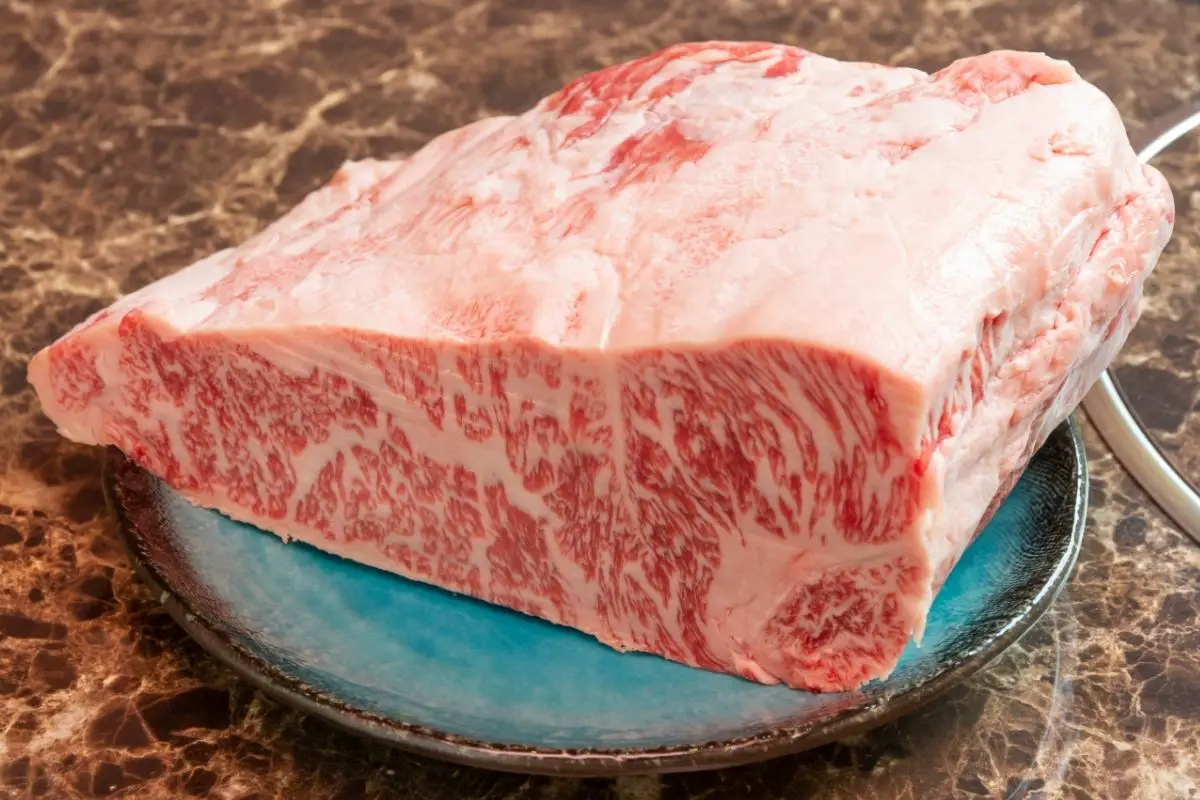Perhaps one of the most popular and beloved of all traditional Japanese dishes is Sashimi. Sashimi is simply raw meat cut into thin pieces, and is usually served alongside soy sauce.

What makes Sashimi so great is that it can be comprised of any sort of meat; beef, chicken, venison, and even tofu are all possibilities for Sashimi dishes, so whilst the most popular form of Sashimi is made of seafood, especially salmon, it is completely up to you as to what meat you decide to utilize when making Sashimi.
This guide will aim to help you cut Sashimi perfectly at home every time!
History Of Sashimi
Sashimi is a long-established tradition in Japan that dates back thousands of years, first arriving on Japan’s shores around 500 BCE, and has since become a cult classic up and down the country.
The word Sashimi literally translates to “cut body”, but the kanji used is for “pierce”, as the kanji for “cut” was a favorable term that was reserved for samurai.
Before You Start
Before you start cutting your chosen meat, there are a few important things you need to consider before you can begin cutting your own Sashimi!
Knives
Your choice of knife is incredibly important when cutting Sashimi, and there are some factors you should consider when choosing which knife to use:
- Length: The best knives for cutting Sashimi are at least 7 inches long, and should not have any ripped or jagged edges, this ensures a smooth cut through the meat.
- Your knife should have a single bevel, and the opposite side should be concave, which will help reduce the drag on the meat whilst cutting.
- It is vital that your knife fits comfortably in your hand, so make sure your knife is perfect for you.
How To Hold The Knife
Knowing how to hold your knife is just as important as having a good quality knife, here are some tips on how to ensure that you’re holding your knife properly:
- Use your thumb to hold the fish, this will help to prevent it from moving
- When handling the blade, use your index figure or your thumb, as this allows you to control both the angle and the accuracy when cutting the meat.
- When cutting the meat, curl your fingers inwards, almost to resemble a paw. This will give you a good grip on the meat whilst also protecting the tips of your fingers from the knife.
Choice Of Meats
Arguably the most important thing before you can decide on what method to use to cut your Sashimi is what meat you are going to use. Sashimi can refer to any sort of meat, however, it is important that the meat you use is high-quality and fresh, and since Sashimi is eaten raw, then it is imperative that you are cautious in your choice of meat.
Furthermore, you should also ensure that you remove any bones and wash your meat and knives before beginning to cut your meat, this is to prevent any cross-contamination as well as to prevent you from swallowing any small bones, which can become a choking hazard when consumed accidentally.
Cutting With The Grain Vs Cutting Against The Grain
When cutting Sashimi, it is a necessity to cut against the grain, for various reasons. Firstly, it prevents the pieces of meat from falling apart, as cutting with the grain can tamper with the meat’s integrity, and will overall make the meat unappealing.
It also creates a better texture once cut, shorter fibers in each piece give a better consistency, whereas cutting with the grain would mean that each piece would have an inconsistent amount of fibers, with some pieces not having any fibers at all.
Methods
Did you know there are actually multiple methods for cutting Sashimi?

Which one you use depends on your preference and on how you intend to serve your Sashimi, so you should read through each one of them and decide which one is best for you!
Hira-zukuri
The primary method of cutting Sashimi is called Hira-zukuri and is best used when cutting either tuna or salmon (see also ‘What Are Bonito Flakes?’). If you’d like to try this style, here’s what you have to do:
- Angle your knife slightly to the left
- Draw the knife towards the meat
- Pull the knife towards yourself.
- The aim here is to cut the meat into a rectangle shape, with the thickness measuring about 2mm to 3mm.
Kaku-zukuri
This method of cutting is similar to Hira-zukuri, but instead utilizes the tip of the knife’s blade to cut through the meat, and provides a slightly thicker cut. To achieve this:
- Angle your knife to the left
- Slice through the meat using the blade’s tip
- Cut slices about 1.5 – 2.5cm thick.
Sogi-zukuri
This method is best for those wanting a super thin cut of Sashimi, and takes a bit of skill to execute, if you’d like to try this method at home, here is the method:
- Firstly, put your knife at a 45-degree angle
- Then, begin to move your knife from left to right.
- Cutting towards the left at first will help create the angle you need.
Conclusion
Sashimi is an incredibly popular dish and a lot of factors go into making sure that your Sashimi is perfect, so it is important that you make sure that you have an adequate quality knife, that your meat of choice is suitable for Sashimi, and that you are familiar with the method of cutting that you intend to use.
Sashimi requires a very skilled technique and can be difficult to recreate at home, however by following the tips and guidelines on how to prepare for cutting Sashimi, as well as the guide on the most popular methods of cutting Sashimi provided, you should be able to make one of your favorite traditional Japanese dishes at home!
- Transport in Japan: Exploring Buses, Public Transportation, Railways, Bicycles, and Major Cities - April 3, 2024
- Exploring Japan: Prefecture and Regions of Japan - April 3, 2024
- Travel Guide: Visiting Mount Koya (Koya, Mount Koya, Koyasan) – A Pilgrimage to the Spiritual Heart of Wakayama in Kansai, Japan - April 2, 2024








